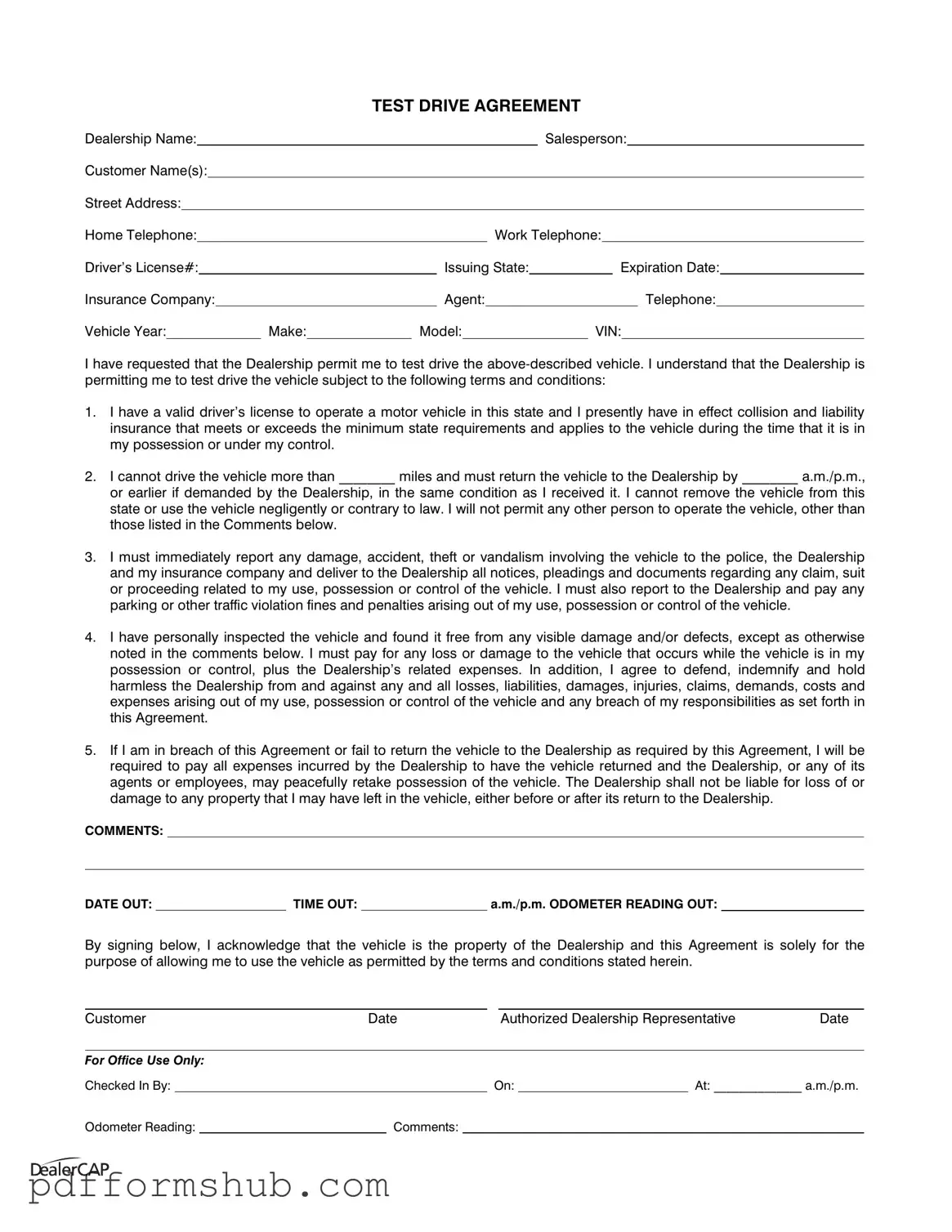The Test Drive form is an essential document for anyone looking to take a vehicle for a spin before making a purchase. It serves multiple purposes, ensuring both the customer and the dealership are protected during the test drive process. Key elements of the form include the identification of the dealership and salesperson, as well as the customer’s personal information, such as their name, address, and contact numbers. Additionally, it requires the customer to provide their driver’s license details and insurance information, confirming they meet state requirements. The form outlines specific conditions for the test drive, including mileage limits and the obligation to return the vehicle in the same condition as received. It also emphasizes the importance of reporting any incidents, such as damage or theft, and the customer's responsibility for any related costs. By signing the form, the customer acknowledges that they have inspected the vehicle and agree to indemnify the dealership against potential claims arising from their use of the vehicle. This comprehensive approach helps ensure a smooth and responsible test drive experience for all parties involved.
